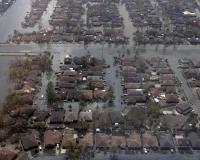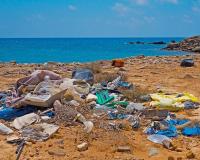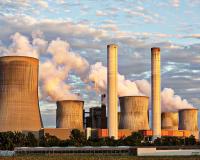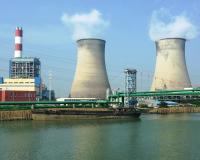
Vibrant Environment
Climate Change And Sustainability
All | Biodiversity | Climate Change and Sustainability | Environmental Justice | Governance and Rule of Law | Land Use and Natural Resources | Oceans and Coasts | Pollution Control

As the effects of climate change become more prominent, countries in various parts of the world begin to consider ways to incorporate climate change adaptation into their legal frameworks. Unlike provisions related to climate change mitigation, which usually set requirements for greenhouse gas emissions, statutory provisions addressing climate change adaptation can be wide-ranging and intricate.

In the Alaskan Arctic, Inupiat hunt bearded seals for food and blubber—a tradition spanning generations, and based on hunters’ extensive knowledge of the weather, ice, seal habitats, and how to prepare and pay respects to the animal after killing it. But over the past few generations, their ability to harvest seals has been significantly affected with the warming oceans, melting ice, and changing patterns of marine animals in the Bering Sea. Last spring, hunters in Unalakleet, Alaska, could not participate in the harvest because there was little ice cover. Since seals use ice pans as a place to rest above water, reduced ice cover impedes hunters’ ability to find and hunt the animals. Inupiat worry about what these environmental changes will mean for future generations.

The usefulness of Unmanned Aerial Systems (UAS) and Unmanned Aerial Vehicles (UAV) as an emergency response tool has received abundant public attention through intense media coverage of recent hurricane impacts and their aftermath. The dramatic imagery captured by UAS in the wake of Hurricanes Florence and Michael exemplifies how effective these devices are in capturing images and information from hard-to-reach or dangerous areas that are inaccessible to ground personnel. These situations make it important to understand the rules and regulations for operating a UAS, especially in the aftermath of a natural disaster. Unauthorized use of UAS in these areas may hinder search and recovery efforts and should be avoided in these areas. Operating a safe UAS program offers the benefit of instant visualization and mapping to a wide variety of response efforts.

What would you do if your job was to manage a small coastal community besieged by job loss, irate voters, hurricanes, oil spills, and hipsters? Here’s a way to find out: boot up your laptop or tablet and check out ELI’s new “serious game,” Digital Cards Against Calamity.
In the wake of Hurricanes Maria, Irma, Harvey, and Florence, which have resulted in an estimated total of over 3,200 deaths and more than $375 billion in damage, finding ways to increase a community’s “resilience IQ” should be a national priority.

It is hard to ignore the pervasiveness of waste in our daily lives and around the world. Whether it is mounds of garbage piling onto beaches in the Dominican Republic, the enormous amounts of plastic that marine animals accidentally consume, pollution from industries and transportation in our air and water, or daily individual waste, we cannot look past the impacts of generating unnecessary waste.

In Part One of this two-part blog, we looked at EPA's recently proposed Affordable Clean Energy (ACE) Rule and how it generally compares with the Obama Administration's Clean Power Plan (CPP) Rule. But with many environmental lawyers being closet economists, no contemplation of new environmental regulation is complete without a discussion of cost-benefit analysis.

On August 21, EPA introduced its much-anticipated Affordable Clean Energy (ACE) Rule to replace the Barack Obama Administration’s Clean Power Plan (CPP) Rule for regulating carbon dioxide (CO2) emissions from our nation’s aging fleet of power plants. This proposal checks off another item on the Donald Trump Administration’s deregulatory agenda and elicits a number of profound questions. What are the main differences between the ACE and the CPP? What are the implications for public health, the environment, and the electric power sector? More philosophically, why, in the 21st century, do we continue relying on a Victorian-era source of energy to power our cell phones?

An increasingly fast-paced technological world requires a restructuring in environmental protection strategy. In A New Environmentalism: The Need for a Total Strategy for Environmental Protection, ELI President Scott Fulton and Dave Rejeski, Director of ELI’s Technology, Innovation, and Environment Program, discuss how environmental protection could be organized and implemented in the future.

On Tuesday, August 28, French environment minister Nicolas Hulot announced he was quitting Emmanuel Macron’s government—on live radio. During his interview with France Inter, a frustrated Hulot explained, “I don’t want to give the illusion that my presence in government means we’re answering these issues properly—and so I have decided to leave the government.”

Recent strategies and policies to phase out coal in China have led to an increase in demand for natural gas. In October 2017, China’s Ministry of Environmental Protection unveiled plans to cut harmful air pollution, especially the particularly damaging fine particulate matter known as PM2.5. The plan, or “Coal Ban,” has set strict targets on air quality levels in addition to a ban on burning coal in 28 of its northern cities, including Beijing. However, while the air quality improved significantly in Beijing this past winter, the rapid ban on coal burning and the transition to natural gas has left thousands without heat.